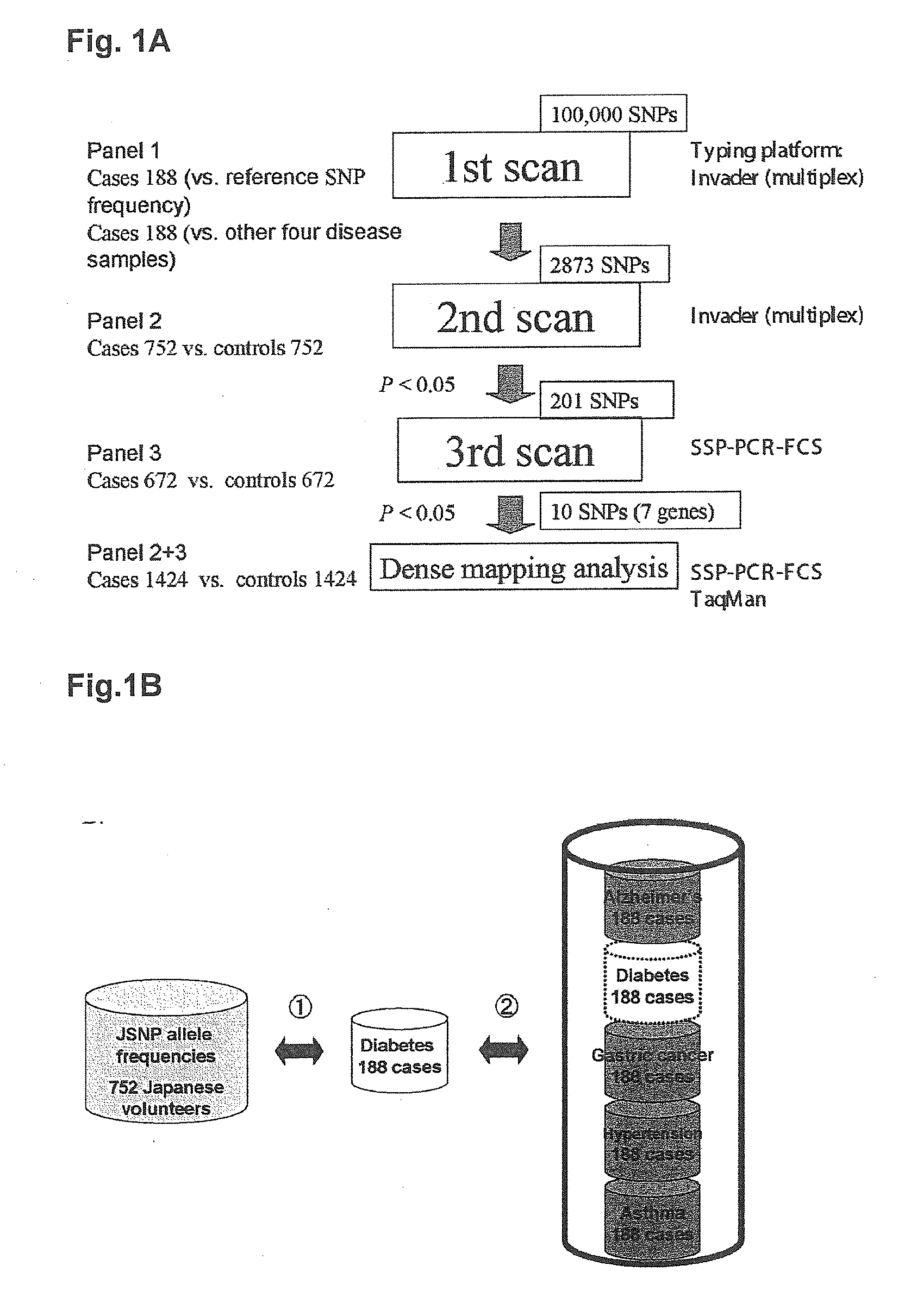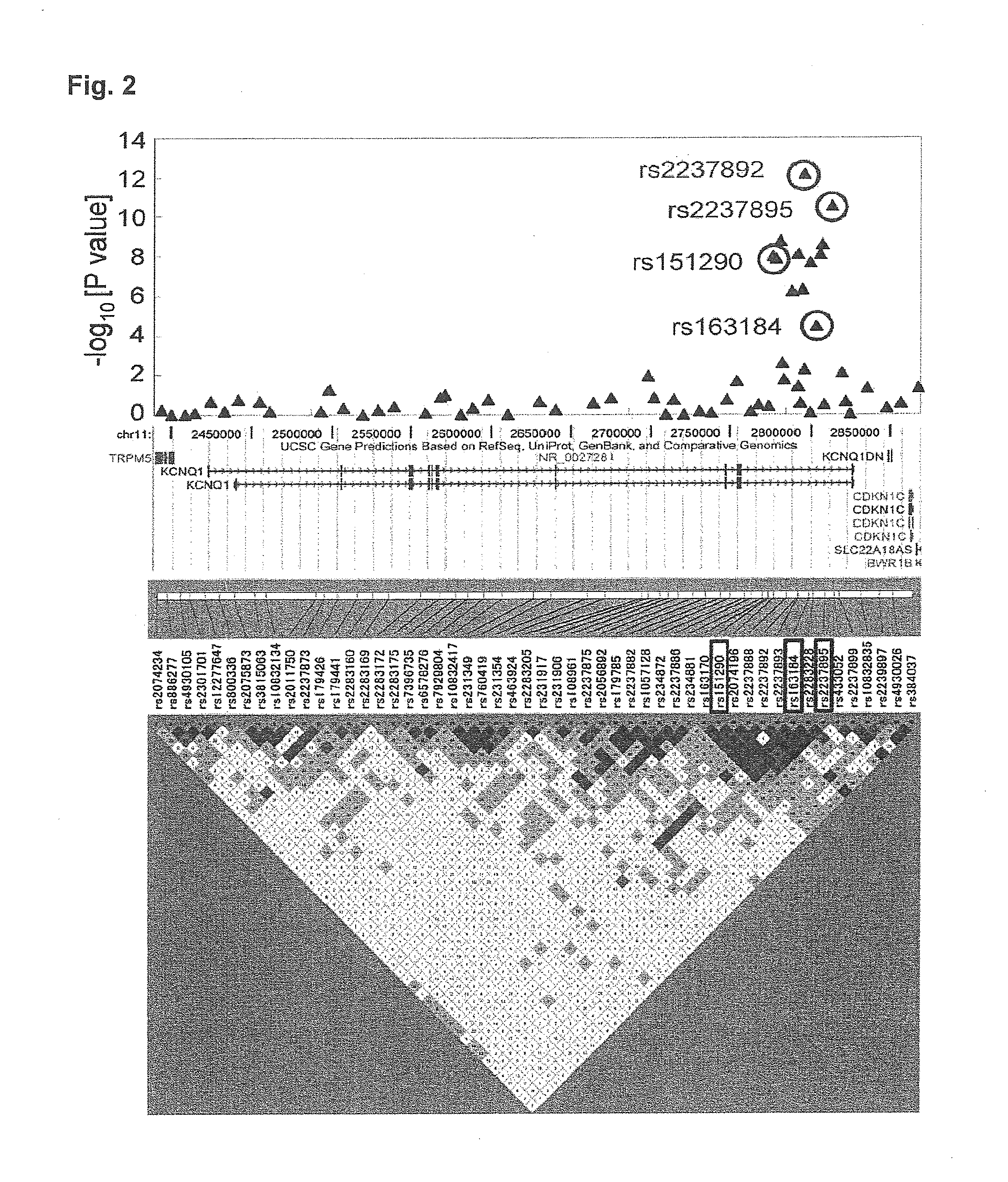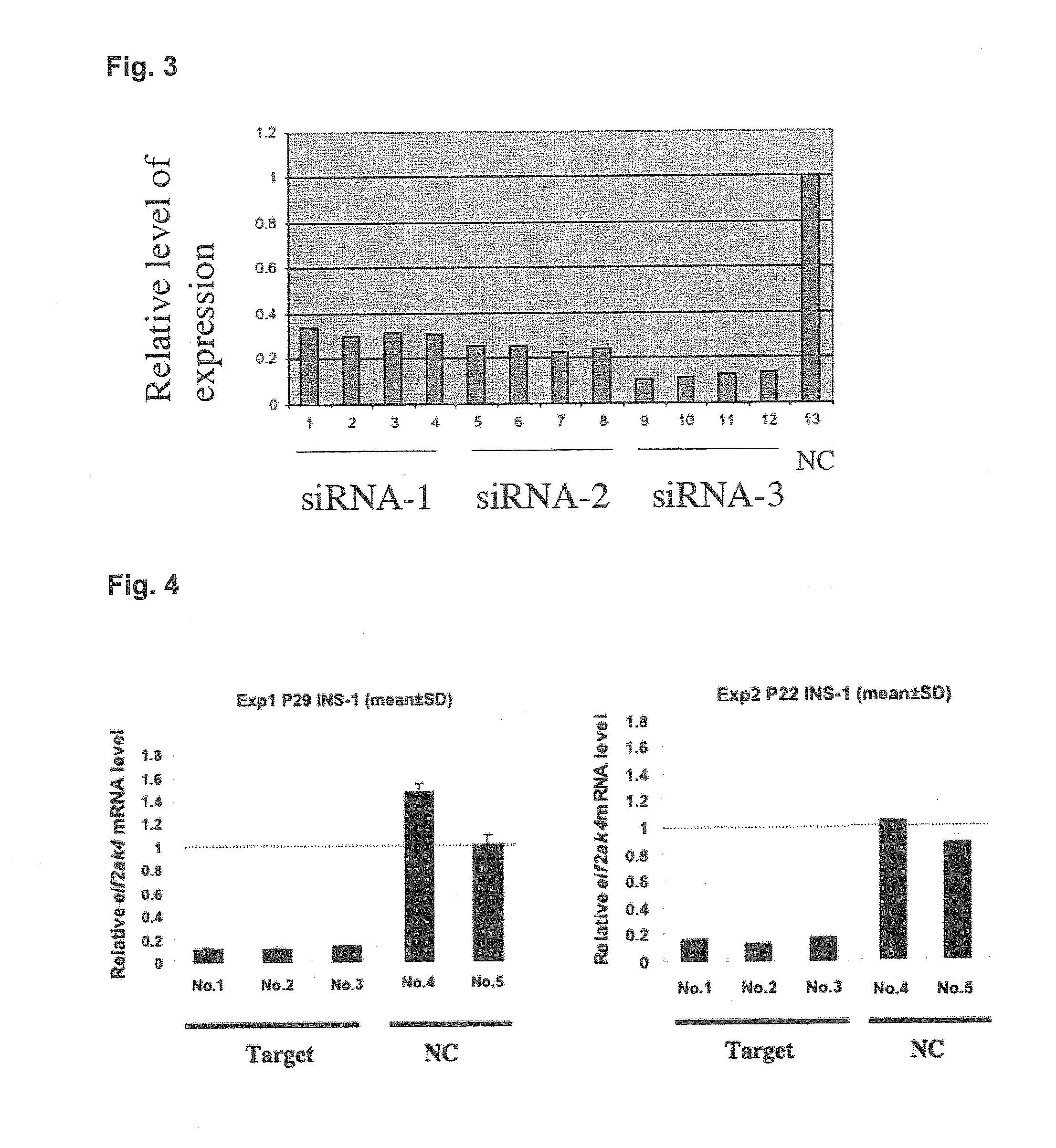Test method for type-2 diabetes using gene polymorphism
a type-2 diabetes and gene polymorphism technology, applied in the field of testing for genetic susceptibility to type2 diabetes in subjects, can solve the problems of inability to identify the relationship of genes, difficulty in treating diabetes patients presenting such complications, and lack of definitive gene factors, etc., to increase the precision of testing for genetic susceptibility, accurate and convenient testing
- Summary
- Abstract
- Description
- Claims
- Application Information
AI Technical Summary
Benefits of technology
Problems solved by technology
Method used
Image
Examples
example 1
1 Materials and Methodology
(1) Samples
[0108]Three independent patient panels were assembled for multistage genome-wide screening. Panel 1 was comprised of 188 patients with type-2 diabetes. Panel 2 was comprised of 752 patients with type-2 diabetes and 752 non-diabetic patients. Panel 3 was comprised of 672 patients with type-2 diabetes and 672 non-diabetic patients. The criteria for test subject patients with type-2 diabetes was as follows: (1) age at initial onset: 40 to 55, (2) maximum BMI2, (3) insulin treatment not begun during the three years following diagnosis, and (4) negative for anti-GAD (glutamate decarboxylase) antibody.
[0109]The criteria for the non-diabetic patients of panels 2 and 3 were: (1) age: 60 or more, (2) no past history of diagnosis of diabetes, and (3) hemoglobin A1c <5.6 percent. The type-2 diabetes patients of panel 3 and the non-diabetic patients of panels 2 and 3 were recruited from 11 facilities located throughout Japan. Genomic DNA was extracted from ...
example 2
[0126]The expression of Kcnq1 in the islets of Langerhans in a type-2 diabetes mouse model was examined by reverse transcription and real-time PCR. The level of expression of Kcnq1 mRNA in the islets of Langerhans of 12-week-old diabetic KK-Ay mice clearly exhibiting both hyperglycemia and hyperinsulinemia markedly increased by 1.6 fold relative to C57BL6 control mice (P=0.0004).
example 3
[0127]A screening system for substances changing the expression of the KCNQ1 gene was examined. Pancreatic β cell strain INS-1 cells (rat) were cultured in RPMI medium (10 percent FCS added). The Kcnq1 gene (rat KCNQ1 gene) siRNAs shown in SEQ. ID. NOS. 1 to 3 in the SEQUENCE LISTING were designed and transfected using a transfection drug (Lipofectamine 2000). Forty-eight to 72 hours later, total RNA was recovered and the expression level of the Kcnq1 gene was quantified with TaqMan assay. As a result, all three of the siRNAs administered to the pancreatic β cell strain INS-1 cells were determined to reduce expression by about 70 percent as an mRNA level relative to negative controls that were not administered the siRNAs, that is, a drop to about 30 percent in expression level was confirmed (FIG. 3).
PUM
| Property | Measurement | Unit |
|---|---|---|
| frequency | aaaaa | aaaaa |
| insulin resistance | aaaaa | aaaaa |
| acid | aaaaa | aaaaa |
Abstract
Description
Claims
Application Information
 Login to View More
Login to View More - R&D
- Intellectual Property
- Life Sciences
- Materials
- Tech Scout
- Unparalleled Data Quality
- Higher Quality Content
- 60% Fewer Hallucinations
Browse by: Latest US Patents, China's latest patents, Technical Efficacy Thesaurus, Application Domain, Technology Topic, Popular Technical Reports.
© 2025 PatSnap. All rights reserved.Legal|Privacy policy|Modern Slavery Act Transparency Statement|Sitemap|About US| Contact US: help@patsnap.com



